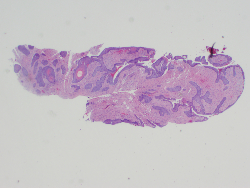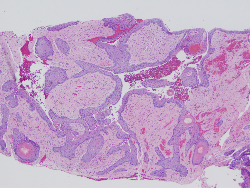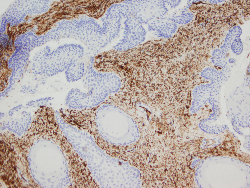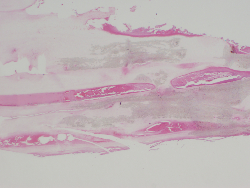Question 1:
A 51-year-old man with history of HIV, AIDS-related diffuse large B-cell lymphoma (DLBCL), in remission, and syphilis (treated decades ago) presented with an 8-year history of a “rapidly growing, thickened fingernail” on his right third digit. It was asymptomatic but required frequent trimming of the distal edge and dorsal surface. The patient denied past trauma or infection of the nail. He had tried multiple treatments including antifungals (topical and oral), bleach, and aggressive filing, all of which had failed. Exam revealed a thickened, dark yellow nail plate with conspicuous curvature along both the transverse and longitudinal axes, reminiscent of onychogryphosis. The nail plate additionally featured longitudinal yellow and white bands, as well as a solitary splinter hemorrhage. All other nails were unremarkable in appearance.
A biopsy of the nail apparatus and a nail clipping were performed.
Figure 1

Figure 2

Figure 3

Figure 4

Figure 5

Figure 6

Figure 7

After reviewing the histopathologic images of the nail apparatus (Figures 1-5) and nail plate (Figures 6-7), which of the following is the best diagnosis?